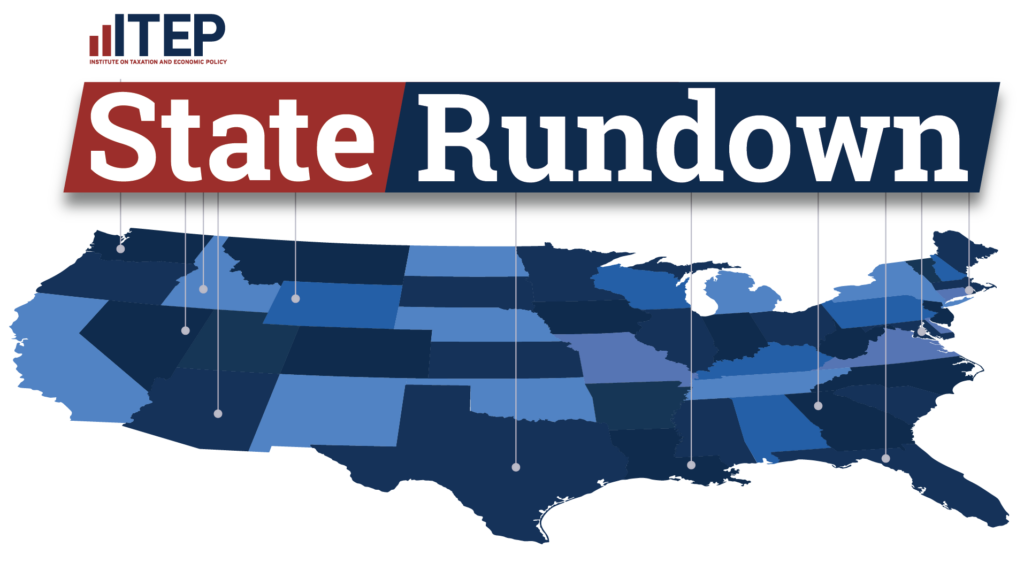Contact: Jon Whiten ([email protected])
The vast majority of state and local tax systems are upside-down, with the wealthy paying a far lesser share of their income in taxes than low- and middle-income families. That’s according to the latest edition of the Institute on Taxation and Economic Policy’s Who Pays?, the only distributional analysis of tax systems in all 50 states and the District of Columbia.
This is largely driven by weak or nonexistent personal income taxes in many states. In those states, much of the income of the very wealthy avoids tax altogether, and there is a larger reliance on more regressive taxes like sales and excise taxes. Meanwhile, progressivity at the bottom of state and local tax codes is being largely driven by strong and refundable state credits, like Child Tax Credits and Earned Income Tax Credits.
“When you ask people what they think a fair tax code looks like, almost nobody says we should have the richest pay the least. And yet when we look around the country, the vast majority of states have tax systems that do just that,” says Carl Davis, ITEP’s Research Director. “There’s an alarming gap here between what the public wants and what state lawmakers have delivered.”
Other key findings:
- Tax systems in 44 states exacerbate inequality by making incomes more unequal after collecting state and local taxes, while systems in six states plus D.C. reduce inequality.
- On average, the lowest-income 20 percent of taxpayers face a state and local tax rate nearly 60 percent higher than the top 1 percent of households. The nationwide average effective state and local tax rate is 11.4 percent for the lowest-income 20 percent of individuals and families, 10.5 percent for the middle 20 percent, and 7.2 percent for the top 1 percent.
- In all, 42 states tax the top 1 percent less than every other income group. Similarly, 41 tax the top 1 percent less than the bottom 20 percent, and 46 tax the top 1 percent less than the middle 20 percent.
- Most (36) states tax their poorest residents at a higher rate than any other group.
- The 10 most regressive states are (in order of most to least regressive): Florida, Washington, Tennessee, Pennsylvania, Nevada, South Dakota, Texas, Illinois, Arkansas, Louisiana.
- The 10 least regressive jurisdictions are (starting with least): D.C., Minnesota, Vermont, New York, California, New Jersey, Maine, Massachusetts, New Mexico, Oregon. (The first seven of these have tax systems that are not regressive and therefore do not worsen inequality.)
A mix of recent policy changes have worsened, or alleviated, regressivity in state tax systems, depending on the choices made by lawmakers. This edition of Who Pays? shows what the distribution of some states’ taxes would look like if certain policy changes had not been made, as well as what they would look like today if future planned changes had already taken effect.
Some of these changes are dramatically reshaping the landscape of state tax law.
For instance, by undoing a 2020 voter-approved tax increase on the wealthy and then cutting income taxes instead, Arizona’s recent changes have led it to drop to 13th most regressive from what would have been 27th—had the voters’ will been heeded and no further tax changes made. And a flurry of tax cuts enacted since 2017 have dropped Kentucky to 17th most regressive from 30th. Tax cutting in the Bluegrass state is ongoing and, if fully implemented, will eventually drop Kentucky to 8th most regressive.
On the other side of the coin, Massachusetts has risen to 8th least regressive from 18th, thanks to its 2022 voter-approved tax increase on high-income households and 2023 expansions of refundable tax credits for low- and moderate-income families. And New Mexico since 2018 has risen to the 9th least regressive from 27th after a range of progressive tax changes, including a new Child Tax Credit, an expansion to the Earned Income Tax Credit, and tax increases on capital gains and top incomes.
“We’ve seen a lot of states shift their tax systems to become even more regressive in recent years by enacting deep tax cuts for the wealthiest. But we know it doesn’t have to be like this. There is a clear path forward for flipping upside-down tax systems and we’ve seen a handful of states come pretty close to pulling it off,” said Aidan Davis, ITEP’s State Policy Director. “The regressive state tax laws we see today are a policy choice, and it’s clear there are better choices available to lawmakers.”
About the report:
Who Pays? is the only distributional analysis of tax systems in all 50 states and the District of Columbia. The comprehensive 7th edition of the report assesses the progressivity and regressivity of state tax systems by measuring effective state and local tax rates paid by all income groups. No two state tax systems are the same; this report provides detailed analyses of the features of every state tax code. It includes state-by-state profiles that provide baseline data to help lawmakers and the public understand how current tax policies affect taxpayers at all income levels. Over 99 percent of all state and local taxes, measured by their revenue contribution, are included in the analysis.
About ITEP:
ITEP is a non-profit, non-partisan tax policy organization. We conduct rigorous analyses of tax and economic proposals and provide data-driven recommendations on how to shape equitable and sustainable tax systems. ITEP’s expertise and data uniquely enhance federal, state, and local policy debates by revealing how taxes affect people at various levels of income and wealth, and people of different races and ethnicities.





